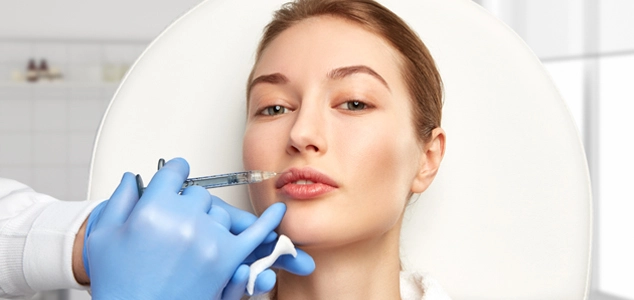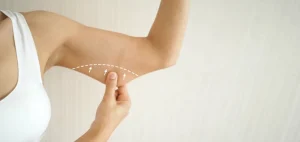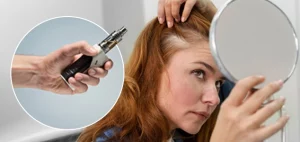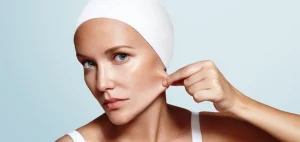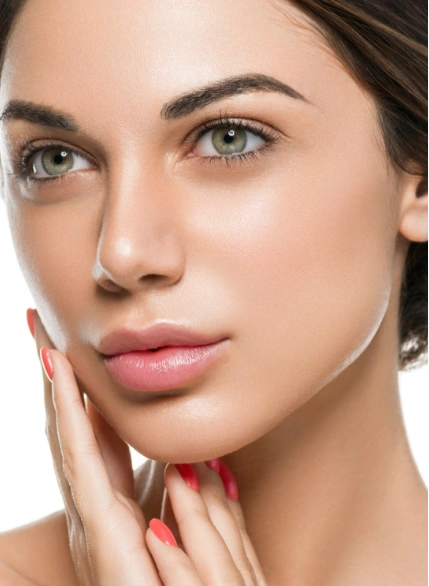Table of Contents
Have you been dreaming of fuller, more luscious lips? Are you considering lip fillers and lip flip NYC to achieve that perfect pout you’ve been longing for?
Before you dive in, let’s first talk about something important: Swelling after lip filler!
Yup, it’s a commonly occuring concern with lip fillers – But don’t you worry, we’ve got you covered!
Let us break down the lip filler swelling stages for you, so that you know exactly what to expect on your journey to the fabulous lips you desire.
How Does Lip Filler Work?
Lip fillers, also known as dermal fillers, are injectable gels typically composed of hyaluronic acid, which is a naturally occurring substance in the body. When injected into the lips, these fillers add volume, shape, and definition, enhancing the overall appearance. Hyaluronic acid attracts and retains moisture, resulting in plumper lips with a soft and natural feel.
Additionally, some individuals may opt for botox lip fillers, which involve injecting a small amount of botox into specific areas around the lips to relax muscles and create a subtle lift or enhancement. This combination approach can provide both volume and smoothness, addressing multiple concerns in a single treatment.
The procedure is quick, relatively painless, and offers immediate lip filler results, making it a popular choice for those seeking a non-surgical solution to lip enhancement.
What Causes Lip Filler Swelling?
Lip filler swelling can be caused by several factors – Here’s a list of the various factors that can cause swelling after lip fillers:
-
Injection Trauma
The very act of injecting the filler into your lips can cause some trauma to the tissues. This trauma triggers the body’s natural response, leading to inflammation and swelling around the injection sites.
-
Hyaluronic Acid Attraction
Most lip fillers are made of hyaluronic acid, a substance that attracts and retains water. After the injection, the hyaluronic acid draws moisture to the lips, contributing to temporary swelling as the filler settles in.
-
Volume and Technique
The volume of filler injected and the technique used by your practitioner can also influence the extent of swelling. Larger volumes or aggressive techniques may lead to more pronounced swelling compared to smaller amounts or gentler approaches.
-
Individual Sensitivity
Everyone’s body reacts differently to lip fillers. Some individuals may be more sensitive or prone to swelling than others, depending on factors like skin type, immune response, and overall health.
-
Pre-existing Conditions
Pre-existing conditions such as allergies, autoimmune disorders, or inflammatory conditions can exacerbate swelling after lip fillers. It’s important to disclose any relevant medical history to your practitioner before the procedure.
What Are The Lip Filler Swelling Stages?
Understanding the lip filler swelling stages is important for managing expectations and preparing for the post-treatment journey.
Here’s are the lip filler swelling stages that you can expect after getting lip injections:
-
Stage 1: Immediate Swelling
It’s normal to experience immediate swelling after lip fillers. This initial swelling is primarily a response to the trauma caused by the lip injections and the introduction of filler into the lips. You may notice that your lips appear fuller than desired initially.
-
Stage 2: Peak Swelling
The swelling after lip filler typically peaks within the first 24 to 48 hours after the procedure. During this time, your lips may feel tender, swollen, and possibly bruised. It’s common for the swelling to be more noticeable during this stage as your body reacts to the filler and begins the lip filler healing process.
-
Stage 3: Subsiding Swelling
Over the next few days, the swelling after lip filler gradually subsides as your body adjusts to the filler and inflammation begins to decrease. You may start to see a reduction in swelling and bruising, allowing you to get a clearer idea of your final lip filler results.
-
Stage 4: Final Lip Filler Results
It may take up to two weeks or more for the swelling to completely resolve and for your lips to settle into their final shape. By this stage, any residual swelling should be minimal, and you’ll be able to appreciate the full effects of your lip enhancement treatment.
How Long Does Lip Filler Swelling Last?
The duration of swelling after lip filler varies from person to person and depends on several factors, including the type and amount of filler used, individual healing capabilities, and post-treatment care.
In general, most individuals experience significant improvement within the first week following the procedure as the swelling gradually diminishes. However, residual swelling and minor fluctuations in lip size may persist for up to two weeks or more in some cases.
Best Ways To Handle Lip Filler Swelling
While swelling after lip filler is a normal part of the lip filler healing process, there are several strategies to minimize the discomfort and accelerate recovery:
- Cold Compress: Applying a cold compress or ice pack to the lips can help reduce swelling and get rid of discomfort.
- Avoiding Alcohol and Blood Thinners: Consuming alcohol and blood-thinning medications or supplements can exacerbate swelling and bruising, so it’s best to avoid them immediately before and after the procedure.
- Elevating the Head: Sleeping with your head slightly elevated can help reduce swelling by promoting fluid drainage from the face.
- Hydration and Gentle Massage: Staying hydrated and gently massaging the lips can promote circulation and accelerate the lip filler healing process.
- Follow Post-Treatment Instructions: Adhering to your provider’s post-treatment instructions, including avoiding strenuous activities and excessive sun exposure, is crucial for optimal healing and minimizing swelling.
Conclusion
Understanding the lip filler swelling stages is essential for anyone considering or undergoing this popular cosmetic procedure. While swelling after lip filler is a normal and temporary side effect, proper preparation and post-treatment care can help minimize discomfort and speed up the recovery.
At Syra Aesthetics, we’re dedicated to providing personalized care and guidance throughout your aesthetic journey, ensuring beautiful and natural-looking lip filler results.
Schedule your consultation with Syra Aesthetics today and let us be your partner in beauty.
– Disclaimer –
This blog is for informational & educational purposes only, and does not intend to substitute any professional medical advice or consultation.
For any symptoms or medical advice, please consult with your physician,
Or Book an appointment with our aestheticians at Syra Aesthetics.

About The Author
Dr. Syra Hanif M.D.
Board Certified Primary Care Physician
Dr. Hanif is the Director of Aesthetic Medicine. She is a board-certified physician in Aesthetic Medicine who specializes in using non-surgical alternatives in order to enhance one's appearance through Botox and fillers.
Read More





